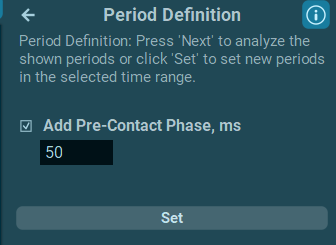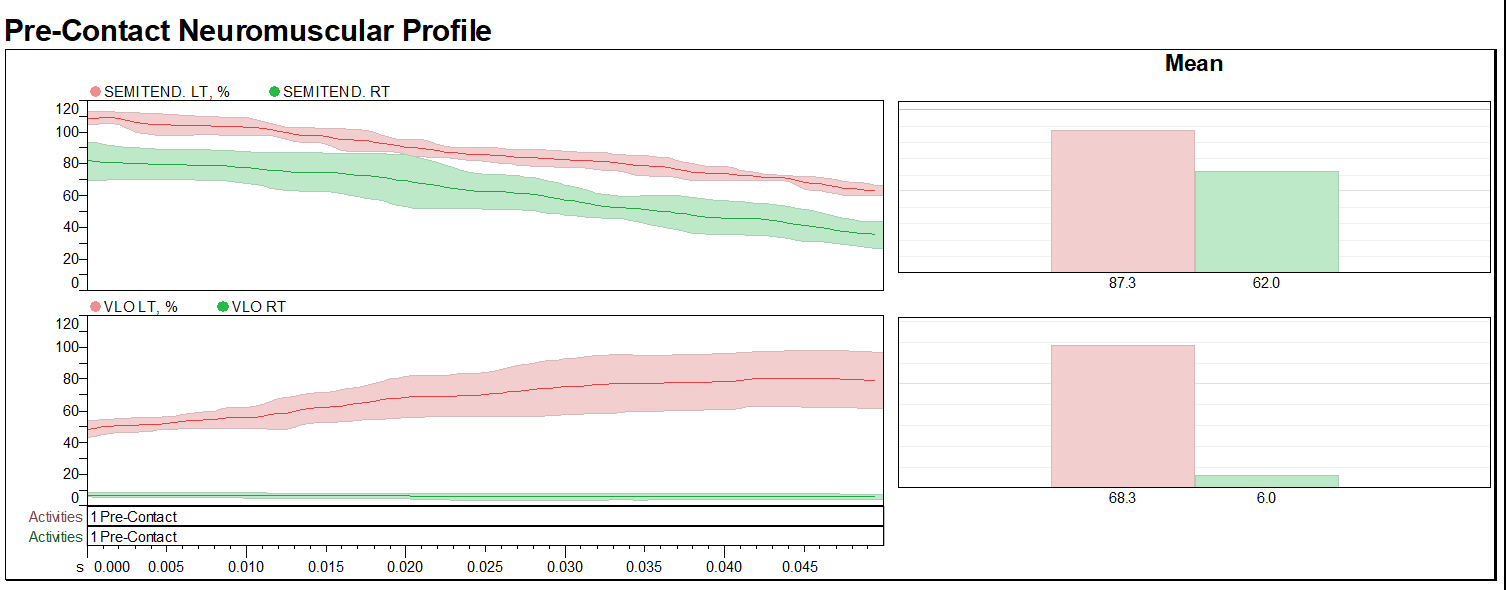Introduction
Adding a Pre-Contact phase to any jump allows users to examine neuromuscular activity in the milliseconds leading up to ground contact. This period captures important preparatory behavior related to landing readiness, motor control, and injury-risk mechanics.
Users can specify the pre-contact duration in milliseconds, and the phase integrates fully into timelines, overlays, and phase-specific reporting. Existing jump analysis workflows are unaffected when the feature is disabled.
Use Scenarios
- Evaluate neuromuscular preparatory behavior with EMG before a jump landing
- Use the Translation Toolbox with an IMU-based motion capture system to expose Center-of-Mass data to evaluate CoM position approaching a vertical jump or lateral cut.
References
Evaluating EMG activity pre-landing is a validated approach in several articles, linked below, highlighting the use of a pre-contact phase as a critical factor in injury risk assessment and performance analysis.
Several articles used to evaluate the validity of the Pre-Contact phase are attached to this article.
Bencke & Zebis (2011)🔗: Gender differences in neuromuscular pre-activity during side-cutting.
Zebis et al. (2016)🔗: Influence of prevention training on pre-activity and ACL injury risk.
How to Use it in MR

For any jump analyis task, you can add a Pre-Contact phase. In the period definition stage of generating a jump report, a Pre-Contact checkbox will appear on the toolbar. Check the box to include the Pre-Contact phase, then type in your desired Pre-Contact interval (in ms).
To apply the Pre-Contact phase to set jumps, click Set.
When set, a phase called Pre-Contact will appear before the braking phase of the jump/cut. The phase length is the length entered in ms.

In the Change of Direction report, EMG activation patterns can be visualized in the Pre-Contact Neuromuscular Profile, if the EMG channels were recorded.


